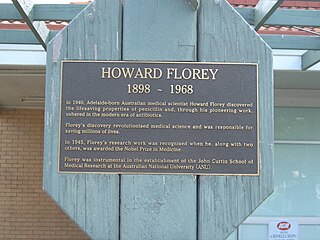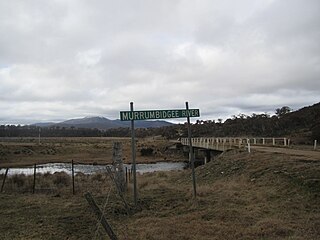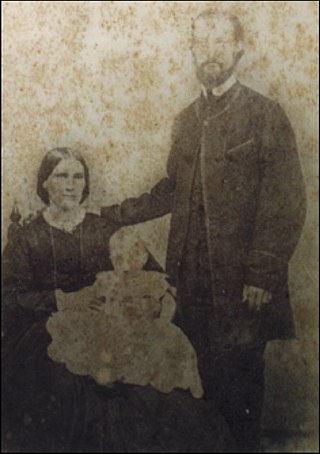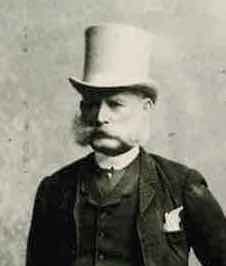
Sir Austin Chapman was an Australian politician who served in the House of Representatives from 1901 until his death in 1926. He held ministerial office in the governments of Alfred Deakin and Stanley Bruce, serving as Minister for Defence (1903–1904), Postmaster-General (1905–1907), Minister for Trade and Customs, and Minister for Health (1923–1924).

Florey is a residential suburb of the Belconnen district of Canberra, located within the Australian Capital Territory, Australia. Florey was gazetted on 5 August 1975 and most houses were constructed in the mid-1980s.
Latham is a residential suburb in the Belconnen district of Canberra, located within the Australian Capital Territory, Australia. The suburb is named for John Latham, Chief Justice of the High Court of Australia from 1935 to 1952. Streets in Latham have the names of Australian judges.

Weetangera is a suburb in the Belconnen district of Canberra, located within the Australian Capital Territory, Australia. The suburb covers an area of approximately 158 hectares. Located approximately 10 kilometres (6.2 mi) north-west of the city, Weetangera is bounded by Springvale Drive to the south and west, Coulter Drive to the east and Belconnen Way to the north. The Pinnacle Nature Reserve, a Canberra Nature Park is adjacent to the south of the suburb, across Springvale Drive.

Amaroo is a suburb in the Canberra, Australia district of Gungahlin and was gazetted on 18 October 1991. Amaroo means 'a beautiful place' in Nyoongar. Place names in Amaroo such as Shoalhaven Avenue are named after Australian rivers and lakes. Amaroo is adjacent to the suburbs of Ngunnawal, Gungahlin, Moncrieff, Forde, Bonner and Jacka. The suburb is bounded by Mirrabei Drive and Horse Park Drive and Gundaroo Drive. The suburb is located approximately 14 km from the Gungahlin Town Centre and 15 km from the centre of Canberra.

Palmerston is a suburb in the Canberra, Australia district of Gungahlin. The postcode is 2913. The suburb is named after George Thomas Palmer (1784–1854) who established a settlement in the Canberra region in 1826 called Palmerville, which was later renamed Ginninderra. It was gazetted on 20 March 1991. Streets are named after mountains and mountain ranges of Australia, with the main street called Kosciuszko Avenue. It is next to the suburbs of Nicholls, Gungahlin, Crace and Franklin. It was the second suburb to be developed in the Gungahlin district, after the industrial suburb of Mitchell. It is bounded by Gungahlin drive and Gundaroo drive.

Gundaroo is a small village in the Southern Tablelands of New South Wales, Australia and in Yass Valley Council. It is situated to the east of the Yass River, about 16 kilometres (10 mi) north of Sutton, about 15 kilometres (9 mi) west of the Lake George range. At the 2016 census, Gundaroo "state suburb" had a population of 1,146. At the 2006 census, its "urban centre/locality" had a population of 331.
The Royal Canberra Show is an agricultural show that has been staged annually in Canberra since 1927 by the Royal National Capital Agricultural Society. The show has agriculture at its core, but it has expanded with the addition of rides, competitions and educational facilities. It is said that this is where "city meets country" and "country meets city".

Blundells Cottage is a heritage-listed six-roomed stone cottage located on the northern shore of Lake Burley Griffin, in Canberra, Australia. The cottage was built by George P. Campbell in about 1858 for his ploughman William Ginn on the original Molonglo River floodplain. Ginn lived there with his family until 1874 and then Flora and George Blundell moved in and remained there until about 1933. Flora was a midwife and George a bullock driver for Campbell. In 1913, the Duntroon estate was acquired by the Commonwealth of Australia to form part of the new Federal Capital Territory, although the Blundells continued to live there. Then, Harry and Alice Oldfield moved to the cottage in 1933.

The Old Canberra Inn is one of the earliest licensed pubs in the Canberra region, Australia. The building pre-dates the city itself. It is located in the present-day suburb of Lyneham.

Ginninderra is the name of the former agricultural lands surrendered to urban development on the western and north-western fringes of Canberra, the capital of Australia. Ginninderra corresponds with the watershed of Ginninderra Creek, which is now in part occupied by the Canberra districts of Belconnen and Gungahlin.
Queanbeyan District Cricket Club is a cricket club operating in the Queanbeyan district of New South Wales and playing in the Australian Capital Territory (ACT) cricket competition. It was formally founded in 1863.

Carwoola is a locality in the state of New South Wales, Australia. It is immediately to the south of the Kowen district, which is located in the Australian Capital Territory. The Molonglo River passes through the Carwoola area before opening out into the Molonglo Plains. The Kings Highway and Captains Flat Road are the two major through routes. Carwoola is part of the Queanbeyan-Palerang Regional Council and the Southern Tablelands geographic area. The area also roughly aligns with the original Carwoola Parish.
Henry ‘Babe’ Curran (1896–1964) was one of the most successful Australian woolgrowers during the industry's boom in the 1940s and 1950s.
George Gribble (1868–1947) was an Australian farmer and soldier, who won renown in tent pegging and other sports.
John Casey was an Irish rebel, who was caught and tried in 1824 and transported to Australia in 1826. He won his freedom by helping capture the bushranger, John Tennant, in 1828 and became one of the early pioneers of the Gundaroo district. John Casey came from Loughmoe in County Tipperary.

Deasland was a historic homestead at Ginninderra in Canberra’s north on the Barton Highway. It was demolished in early 2022 due to 'Mr Fluffy' asbestos contamination.

Yaouk is a locality in the Snowy Monaro Region, New South Wales, Australia. It lies in open grassland valleys surrounded by mountains on both sides of the Murrumbidgee River, downstream from and east of the Tantangara Dam, north of Adaminaby, east of the Kosciuszko National Park and south of the Namadgi National Park in the Australian Capital Territory, but separated from it by the mountainous Scabby Range. It is about 110 km south of Canberra and about 75 km northwest of Cooma. At the 2016 census, it had a population of 25.

Henry Joseph Curran (1843-1882) was an Australian journalist and leading figure in the Catholic communities in Goulburn and Boorowa in the 1860s and 1870s. Curran worked for newspapers in Goulburn, established and edited the Burrowa Advocate and also worked in Sydney on the Freeman's Journal.

Thomas Lodge was a publican in Breadalbane, who was falsely accused of abetting Ben Hall and his gang in 1865. Although acquitted, he was stripped of government contracts and bankrupted. Lodge was born in Leicester, England in 1830 and died in Mandurama, NSW, in 1906.















